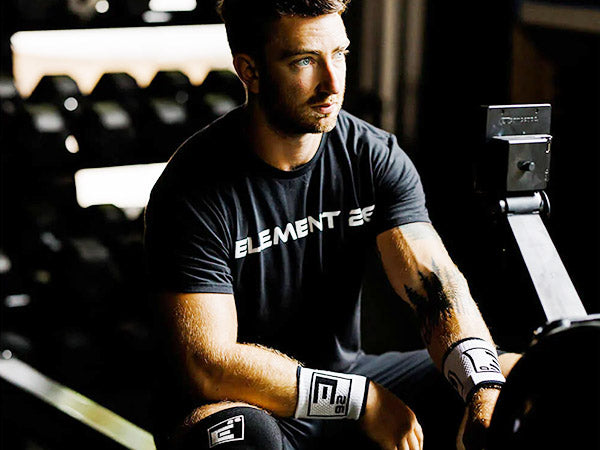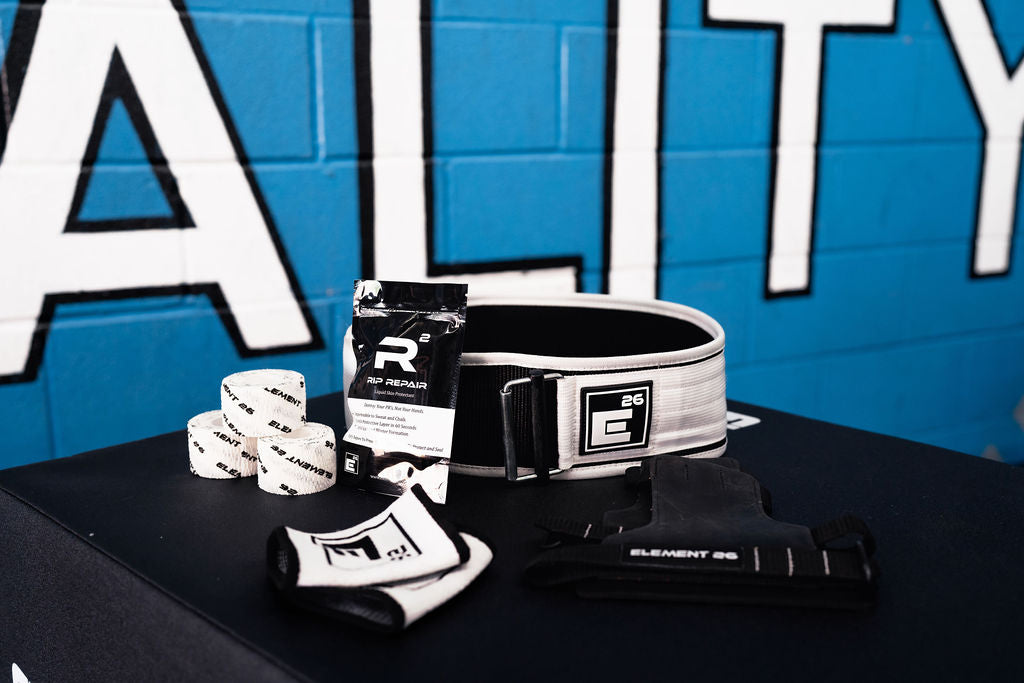
When do You NEED a Weightlifting Belt?
This is a great question and one we get a lot here at Element 26.
So I want to take the time to share with you when it's appropriate to wear a weightlifting belt and when you definitely do not need it!
3 Perfectly Reasonable Times to Wear a Weightlifting Belt:
1.) Attempting a heavy lift that is greater than 85% of your 1 Rep-Max- The function of a weight belt is to increase intra-abdominal pressure therefore enhancing stability around your mid-section. Increasing stability is why you can lift a little bit more when you put a belt on. Anything lower than 85% of your 1RM, you really don't need a belt to generate that extra stability for the lighter weights.
2.) Attempting a WOD/Metcon with a heavy movement and anticipated fatigue- If you have a planned WOD that has a heavy deadlift followed by handstand push-ups and running, then throw on that belt. Anytime when there is going to be accumulating fatigue mixed with a heavier load, there is going to be a risk for form breakdown.
3.) When your form for the basic lifts is great- If you have the form basics mastered for the main lifts: deadlift, squat, overhead press, and clean, and you have been lifting/training those for over a year, then great! Throw on a belt! The belt has potential to make you better.
3 Times when You Should NOT Wear a Weightlifting Belt:
1.) When performing bicep curls or using the tricep dip machine- Please, please, please don't do this. It's completely unnecessary and because I care about you, I don't want you to look silly. When using your biceps and triceps, you're using much smaller muscle groups, therefore there's less ability to produce enough force that would require you to really increase your abdominal stability.
2.) When you have pain and poor lifting form- I'm sure you have seen this before. The guys walking around the gym, saying how they have back pain and need to wear the belt when lifting. I'm going to let you in on a secret, while the belt temporarily reduces their pain level, 99% of the time it's their poor lifting form, inability to train varying movement patterns, and lack of focus on recovery that is causing their pain to continually return. Train belt-less to master your form, then throw on a belt. And if you have pain, please seek out a medical professional to help you! I'm not telling you what to do about your pain, just sharing what I have seen in my own experiences as a healthcare provider.
3.) During your entire workout- There are some people that wear their belt for the entire workout, and unless it's an Element 26 belt ;) you don't need to do that! If you're walking around the gym or hitting some accessory movements, don't wear the belt. If it's a heavy lift, or you're going for a new personal record, or you have a WOD with a heavy lift involved, that's when you wear the belt!
Do you wear a belt? What movements do you wear it for? Shoot me an email to support@element26.co, I'd love to hear from you!!
#TeamE26
Phil Gauthier
Doctor of Physical Therapy
Strength Coach
Element 26 Co-Founder
Online Store: www.element26.co
PS.
I would love to continue to support you on your fitness journey, so definitely follow us on Instagram. And when posting your training videos and post workout selfies, use the hashtags #element26 and #TeamE26 and then tag us @element26.co so we can share! We'll be here for motivation, accountability, training tips, and gear launches/updates.
If you are ready to have an even deeper connection with other athletes who are all-in on their fitness journey, we invite you to join our private Facebook Group: Team E26: Less Ego, More Iron. The catch, you have to be committed to your journey and committed to helping others along the way. Success is determined by the strength of the community!




